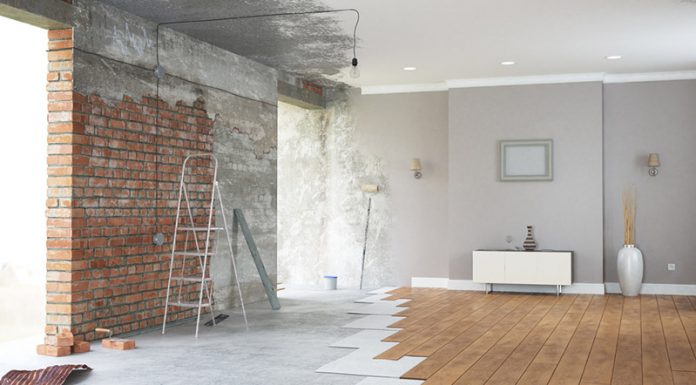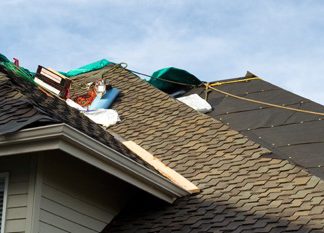When remodeling your home, it is usually necessary to find ways to save money. However, one area where you should never cut corners, is with floor protection. Even with the best of intentions, accidents can happen. This will mean extra costs for cleaning or even new flooring. In this post, we will look at the different sorts of floor protection you can use to help you and when to use them.
Why use floor protection?
Remodeling jobs lead to heavier footfall through the house. This makes it easy for dust, dirt, and paint, to get spread around. Even without an accident, that means the clean-up will be harder. However, from paint getting trodden into carpets to spatter from the ceiling, impact damage, and other spillages, accidents do happen. When they do, clean-up itself can become a remodeling job.
Floor protection helps to ensure that even when these accidents happen, your surfaces are protected. You also don’t have to worry about all those boots traipsing across your carpet or something cracking a beautiful slate tile floor, or scratching of your carefully sanded boarded floor. For each different surface, there is a choice of protective floorings you can choose from.
5 types of floor protection
Here, we outline 5 different types of floor protection product, the surfaces they are good for, and the types of remodeling project they work for:
1.Plastic Film
Plastic film is ideal for carpets, easy to lay, and reasonably priced. It is a great way to give protection to areas with challenging shapes, such as staircases, corners, and other curved spaces. You can also find plastic films that can be used for general surface protection, including for walls, cabinets, and trim.
It is best used to protect carpets against remodeling projects that are going to get very dusty. Without floor protection, carpets will suck up a whole load of dust that no amount of vacuuming will get rid of. It will also defend against accidental spills and splatter from paint jobs and helps to prevent slips and falls.
2. Paper covering
Paper covering is usually made from a heavy-duty paper, like roisin paper, and is best used on hard surfaces. It can be easily laid out like plastic film but is more likely to tear if laid out on carpet than plastic film. That being said, there are reinforced options that can work on softer surfaces too.
Although made from paper, they protect against spills thanks to a protective bottom. They are also one of the cheapest options and far more effective than ‘home-brewed’ options like newspaper, which just allows spills to seep through onto the surface beneath it. If you are on a budget and your remodelling job is predominantly involving hard surfaces, paper floor protection is a good way to go.
3. Drop cloths
Drop cloths are made from canvas and offer surface protection from leaks. They are also slip-resistant making them a safer choice for remodeling projects. They also prevent any leaks getting through, making them a much safer option than some old sheets which, like newspaper, will just allow spills to pass through to the surface below very quickly.
Drop cloths are designed for paint jobs and can cope with heavier spills than paper and plastic covering. They make clean-up easier and can be used whether your remodeling project is on hard, soft, or both types of surfaces. However, they tend to be more expensive than some of the other floor protective product types.
4. Floor Shell & Ram Board
For heavy-duty protection of hard surfaces, Floorshell or ram board is the answer. Made from recycled fibers, but incredibly strong, this protective product offers the highest protection for your floor. This is great for larger projects and in situations where heavy objects could potentially cause damage to expensive flooring.
This type of floor protection is also breathable so can be used on top of a newly laid floor whilst protecting it from spills from above. When flooring needs to cure, this can ensure a remodeling project is less disruptive and allow you to use a room sooner. It is easy to put together, but harder than plastic film and paper covering to lay.
5. Corrugated Plastic
Corrugated plastic can also be used for heavier duty remodeling projects. It is particularly good where the risk for spills is high. It also protects things like slate tile flooring from cracking or shattering when tools drop. It is reusable and can stand up to having forklifts drive over it. However, it won’t last as long as things like Floorshell and ram board.
Whether you are doing renovation work yourself or bringing in professional help, floor protection is something that should always be involved in your remodeling job. It makes clean-up easier, protects against dust and spills, and prevents damage to protected flooring.













